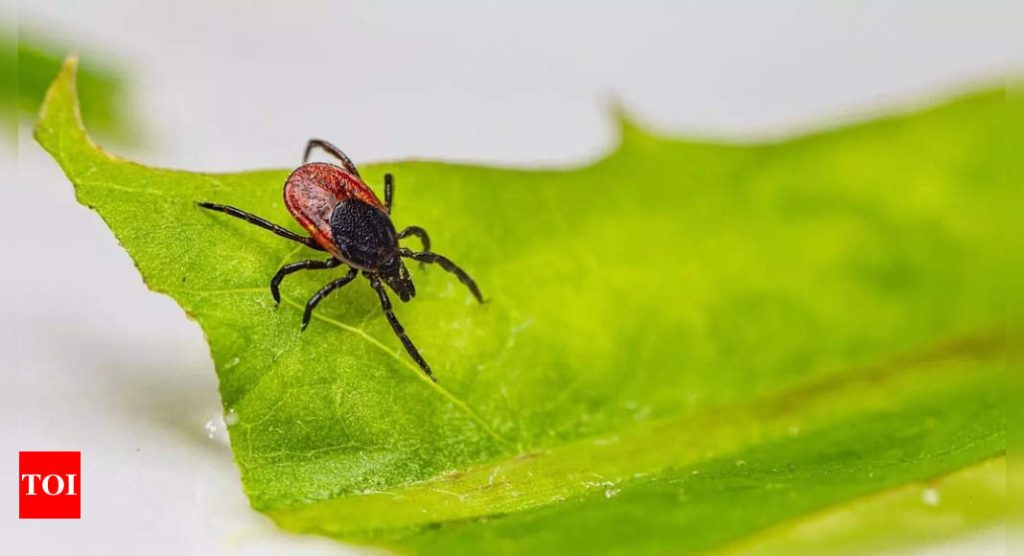Symptoms of tick-borne diseases can range from mild to severe. Some tick infestations cause mild symptoms, while others require antibiotics for treatment. However, tick bites can also be life-threatening. In one recent case, a Canadian man was diagnosed with a rare type of tick-borne disease with life-threatening consequences.
A warming climate has led to a 1,000 per cent increase in Lyme disease cases in Canada over the past decade, according to government health data.
The reason for the increase in relatively unknown tick-borne diseases is unclear, but warmer temperatures and shorter, less severe winters may be allowing ticks to expand their range. More suitable habitat for ticks means more Canadians are at risk of encountering tick-borne diseases.
Researchers believe that ticks, which carry bacteria that cause infections such as Lyme disease and anaplasmosis, may also be developing the resilience to survive all seasons on mild days, and even find hosts to feed on in temperatures as low as 4 degrees Celsius.
With the growing threat of tick-borne diseases, here’s what you need to know about the symptoms of common diseases spread by ticks.
Here are five common tick-borne diseases, their symptoms, and prevention tips.
1. Lyme Disease
Lyme disease is spread by black-legged ticks and is caused by the Borrelia bacteria. It is one of the most common tick-borne illnesses. Symptoms of Lyme disease are a bull’s-eye rash (erythema migraina), fever, chills, headache, fatigue, muscle and joint pain, and swollen lymph nodes. Eventually, symptoms may include headaches, neck stiffness, severe joint pain and swelling due to arthritis, inflammation of the brain and spinal cord, nerve pain, shooting pains, and numbness or tingling in the hands and feet.
2. Anaplasmosis
It can also be transmitted by the black-legged tick (Ixodes scapularis). The disease is caused by a bacterium called Anaplasma phagocytophilum, which is primarily transmitted to humans through the bite of an infected tick. Symptoms include fever, chills, severe headache, muscle pain, nausea, vomiting, diarrhea, and loss of appetite.
3. Babesiosis
It is also spread by black-legged mites. It is an infection caused by the tick-borne intraerythrocytic protozoan Babesia. Symptoms include fever, chills, sweats, headache, body aches, loss of appetite, nausea, and fatigue. In severe cases, it can cause jaundice and hemolytic anemia.
4. Powassan virus
They are spread through the bite of infected ticks, three species of the Ixodes genus. The ticks transmit the virus by feeding on groundhogs, squirrels, mice and other rodents that carry the virus in their blood. Symptoms of the disease are fever, headache, vomiting, weakness, confusion, seizures, memory loss and, in severe cases, encephalitis.
5. Rocky Mountain Spotted Fever (RMSF)
It is spread by the American dog tick and the Rocky Mountain tick (Dermacentor andersoni) and is caused by the microorganism Rickettsia rickettsii. Symptoms include fever, a rash (which starts at the wrists and ankles and spreads inwards down the trunk), headache, nausea, vomiting, stomach pain, muscle pain, and loss of appetite.
Prevention tips
To prevent tick infection, it is recommended to wear light-colored long-sleeved shirts and pants, use insect repellent containing DEET or Icaridin, and walk on cleared roads. After going outside, check your whole body for ticks and remove any found with clean fine-tipped tweezers. It is important to dry clothes in a hot dryer for at least 10 minutes to kill ticks.
Dr Tushar Tayyar, consultant internal medicine at CK Birla Hospital, Gurugram, shares some tips to avoid tick-borne diseases.
1. Stay out of wooded areas with thick grass and leaves. When hiking, always stay on paths.
2. Apply insect repellents containing DEET, picaridin, or lemon eucalyptus oil to skin. Use permethrin-treated clothing and equipment.
3. Wear long sleeves and long pants, and tuck your pants into your socks.
4. Shower immediately after being outdoors: Showering within two hours of coming indoors can help wash away any loose ticks.
5. Properly remove an attached tick: Use fine-tipped tweezers to grasp the tick as close to the surface of the skin as possible. Clean the bite area and your hands with rubbing alcohol or soap and water.
How to effectively prevent fungal infections during the monsoon season


